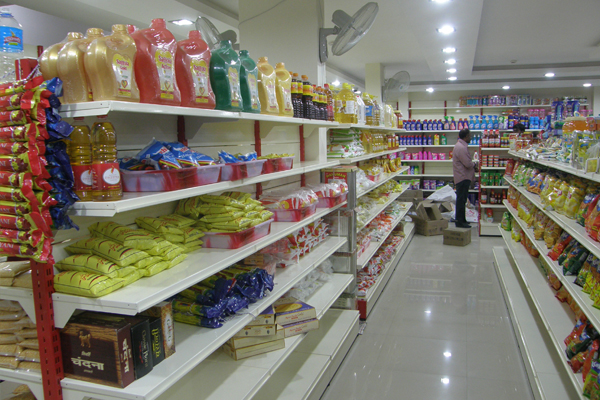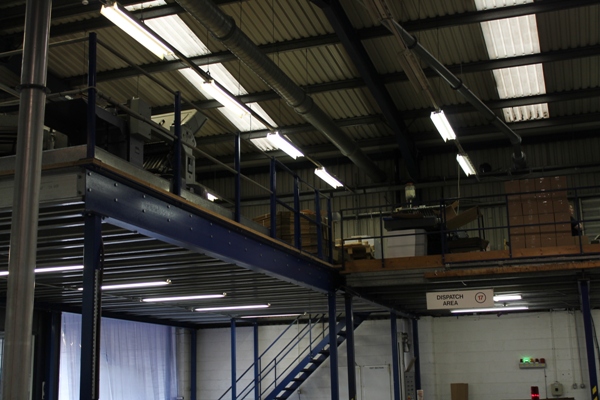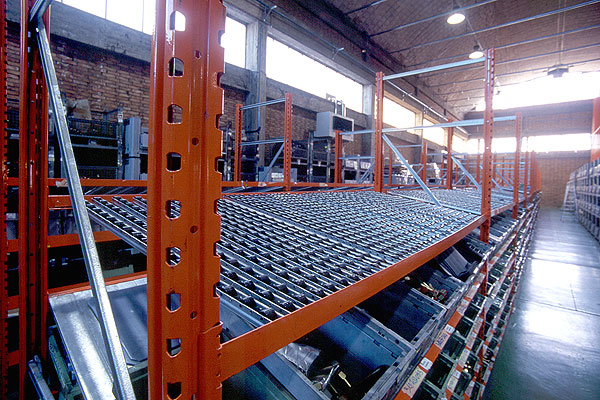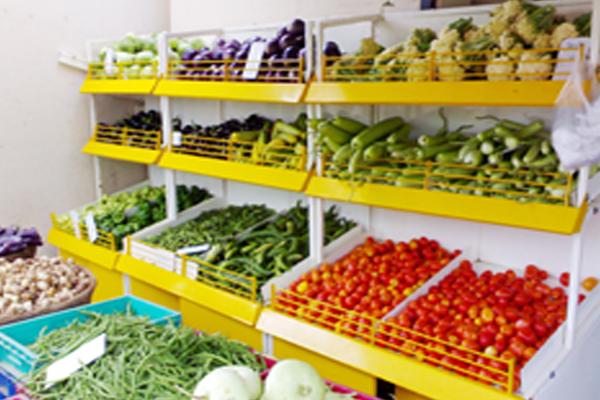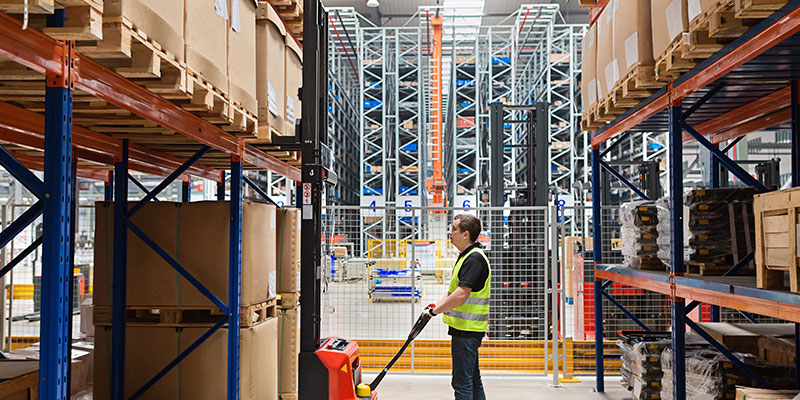
Have you ever been to a warehouse and seen pallet stackers zipping across the floor? Pallet stackers have become common in modern warehouses because they improve material handling efficiency. What are pallet stackers, their types, benefits, and advantages? Let’s explore how these machines add value to your business.
Say Hello to the Pallet Stacker: An Introduction
Pallet stackers are mobile machines designed to lift, transport, and stack palleted materials easily and efficiently. The pallet itself is a flat and horizontal structure used to store goods in warehouses. Pallet stackers use hydraulics and motors and serve as an ideal alternative to forklifts because they are compact and lightweight.
The forks of this machine are designed to straddle, lift, and transport the pallet to any part of the warehouse. The best aspect about the pallet stacker is that it can be manoeuvred even into the smallest of spaces. This makes them perfect for small warehouses with low to mid-level pallet racks.
Pallet stackers are now available in two models:
- Manual pallet stackers
- Electric and Non-electric stackers
Manual pallet stackers rely on their hydraulic systems to lift and move pallets around the warehouse. On the other hand, electric models are becoming more popular, thanks to the combined efficiency of the hydraulic system and powerful motors that help save both money and time.
The right pallet stacker can be a valuable asset to your warehouse, and suppliers will have various options for your business requirements. Below is a list of pallet stacker options to choose from for the material handling in your warehouse.
8 Popular Types of Pallet Stackers For Businesses
1. Manual pallet stackers
As mentioned earlier, manual pallet stackers function with motors and hydraulics to lift goods stocked on open-based pallets. This stacker model has two wheels on the front end and one in the back, which swivels and enables the machine to turn itself around. Although they may not seem trendy as their electric counterparts, manual stackers are built for hardcore lifting and transporting. They can lift upto 2000 kilos and rise up to 250 mm.
2. Manual straddle pallet stacker
The difference between this pallet stacker model and the normal one is that it comes with a footgear to manually pump the hydraulic system and raise the forks. These stackers can bear loads up to a ton and raise them to 3 meters.
3. Electric pallet stackers
The ” all-electric ” pallet stackers are powered by batteries that power the electric motor with electric energy. This energy is then transformed into kinetic energy, used to power the hydraulic pump. Electric stackers can easily lift loads upto 2000 kilos.
4. Semi-electric stackers
These stacker models use the combined efficiency of manual and electric features. The main component in this model is the rechargeable battery that can function for 8-12 hours. These batteries power the hydraulic unit designed to lift a load of 2 tonnes to heights of 4.5 to 6.5 metres.
5. Counterbalance stackers
Have narrow aisles in your warehouse? Go for counterbalance stackers, the wonder pallet stacker designed to carry medium and small loads into limited spaces. These stackers are a great alternative for bulky forklifts that aren’t ideal in small warehouses.
6. Ride-on stackers
As the name suggests, this is the pallet stacker “with wheels”. You can simply ride in the carriage and transport pallets at a reasonable speed from one end of the warehouse to another. This model is particularly helpful for large warehouses and stores.
7. Mono-mast stacker
Want a stacker to help with lighter loads? The electric mono mast stacker truck is the ideal choice. Built to raise the pallet up to eye level, this compact stacker can bear loads only up to 1200 kilos. If your business deals with lightweight goods, this is the model to opt for.
8. Platform stacker
Designed to lift up to 400 kilos, the platform pallet stackers come with the following components:
- Removable platform plate
- Overload protection
- Collapsible foot pedal
- Lifting table
With so many options available, finding the right pallet stacker for your business is essential. Your choice should be a valued add-on to the workflow in your warehouse. Here’s a list of options to consider while pondering your choice of pallet stackers.
Where are Pallet Stackers Used?
Pallet stackers are useful for warehouses handling mid-sized to high-volume goods. Thanks to their compact sizes, these stackers can easily manoeuvre themselves into various configurations ideal for limited spaces. Pallet stackers are now a common sight in:
- Large retail outlets
- Manufacturing units in factories
- Large and small warehouses
Criteria to Consider While Selecting Pallet Stackers
The main criteria to consider before choosing pallet stackers are:
- The size of your business
- Your budget
- Movement of goods per day
- Number of pallets moved per day
- Your future plans for expansion
You can invest in pallet stackers if:
- You do not have qualified or trained staff to handle the loading and unloading of goods.
- Your business deals with high volumes of lightweight goods. Pallet stackers are equipped with tilting capacities to load and unload unpalletised goods.
- You deal with medium-sized and small goods weighing between 600 to 2000 kilos.
- Your warehouse storage space has various storage capacities and working heights.
Pallet stackers are ideally suited to handling goods weighing up to 2000 kilos. Stackers make work efficient and stress-free for your employees. Our next segment will analyse the benefits of using pallet stackers.
Advantages of Choosing Pallet Stackers
Pallet stackers are used in various industrial and retail scenarios because they:
- Have a low entrance barrier which makes them easy to operate.
- Are designed to be quick and nimble in any kind of industrial setting.
- Are more economical than forklifts and other expensive machines.
- Save time and money by improving efficiency and work organisation.
- Are environment-friendly because they are manual or electrically operated without the requirement of diesel or petrol.
- Reduce physical labour and work-related risks within your warehouse or factory floor.
- Are more manoeuvrable in limited spaces and crowded warehouses.
- Are ideal for any kind of racking and shelving solutions, including on mezzanine floors and platforms.
When investing in pallet stackers, you must also be ready to spend time and money to maintain these machines. Regular maintenance will ensure your pallet stackers function with optimum performance. Follow the given maintenance tips to keep these machines shining like new!
Maintenance Tips for Pallet Stackers
- Regularly check and refill the stacker’s machine oil.
- Wash the wheels and remove all traces of dirt before using the stacker.
- Ensure the stacker is kept in a proper position during and after use.
- Adjust the stacker’s lowering value.
- Check the pallet truck’s chain position from time to time.
- Ensure the machine is well-lubricated with a good quality lubricant.
Do Not:
- Operate the stacker on inclined slopes.
- Overburden the pallet stacker beyond the recommended capacity.
Always:
- Set the operating lever to the drive position before moving the stacker. This enables the hydraulic pressure to drop and the drawbar to travel freely. This will optimise the efficiency and durability of the hydraulic seals and other important components.
The Takeaway
Pallet stackers are the preferred choice in many warehouses and retail spaces. If you are looking to maximise your operational efficiency within a limited budget, the pallet stacker is for you!
To know more about pallet racks and other industrial or retail storage solutions, please contact our team at Donracks, Chennai. We are the leading name in the city for all kinds of shelving and racking solutions for industries, retail shops, and other businesses.

